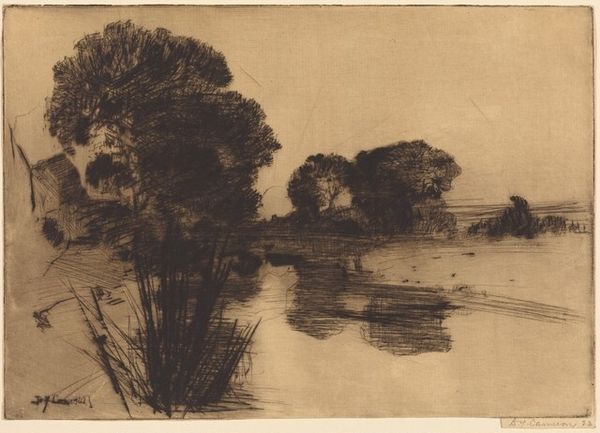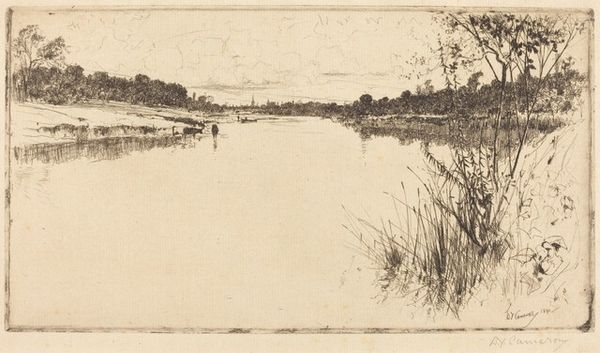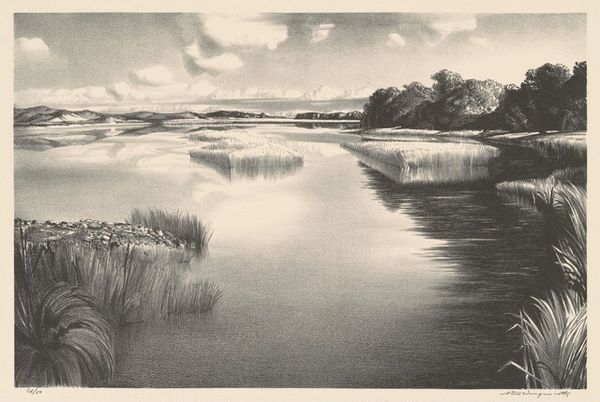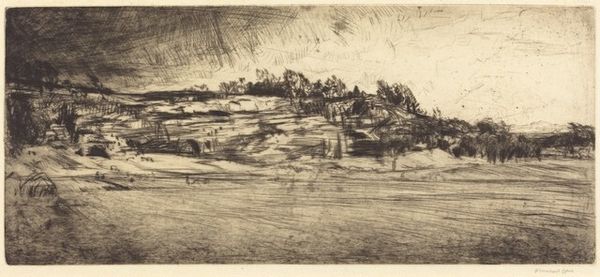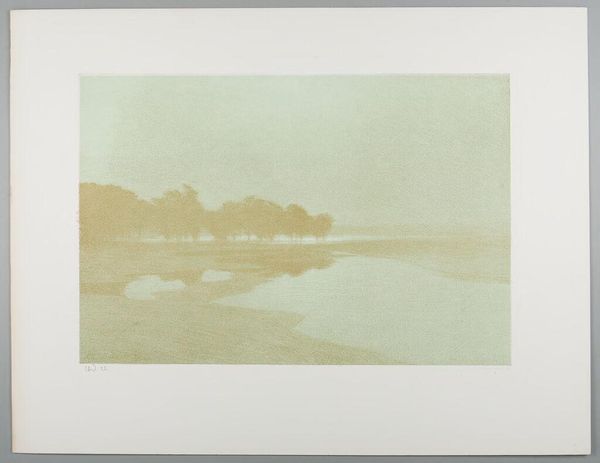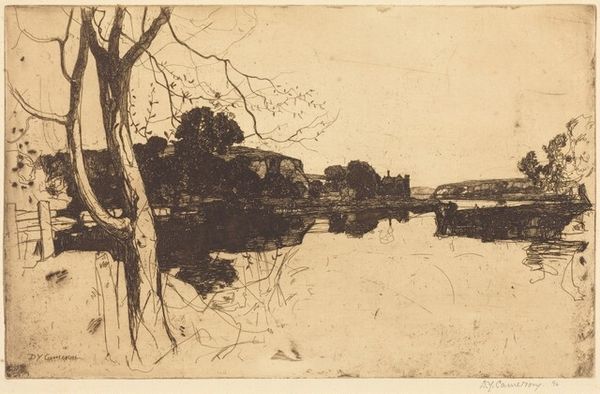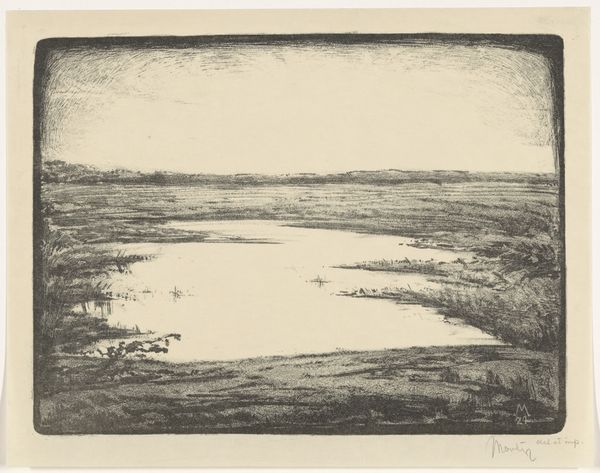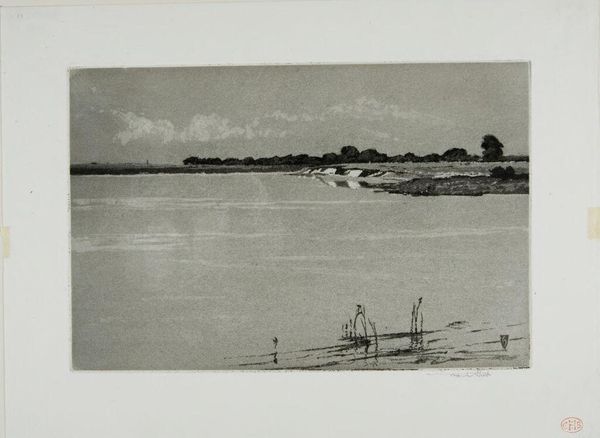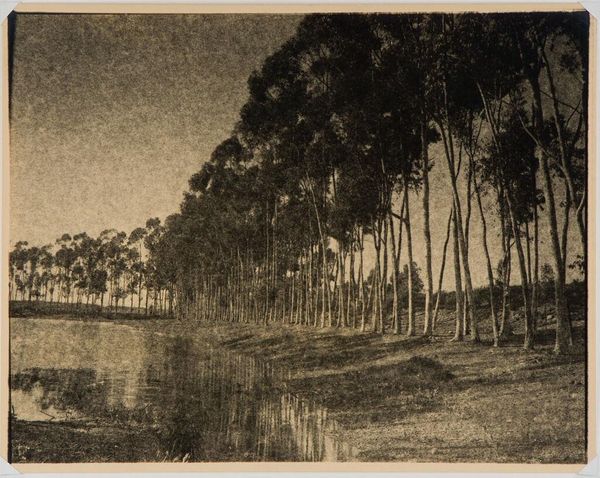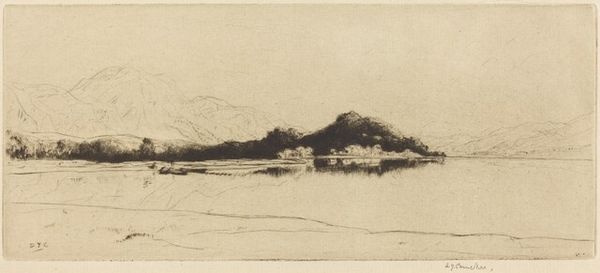
drawing, print, etching
#
drawing
# print
#
etching
#
landscape
#
pencil drawing
#
realism
Copyright: National Gallery of Art: CC0 1.0
Curator: "Midsummer's Day" by F.A. du Peyron, dating back to 1928. It's an etching. What's your initial reaction to this piece? Editor: Quiet. Utterly quiet. There's a sense of deep calm emanating from this scene, the still water, the solitary figure… Curator: Let's consider the period it was created. The late 1920s… This work resonates with the trend for a return to realism following the intense disruption of the First World War. There was this craving for an idealized view of simple living. Editor: Yes, and this idyllic rendering conveniently excludes broader socio-economic turmoil percolating underneath. But, look, even accounting for its escapist bent, this piece has merit. The solitary figure of the fisherman… Isn’t it more than a nostalgic cliché? Think of how frequently solitary male figures fishing feature in this era of art? Curator: Precisely. There's an inherent focus on individual liberty and autonomy within the man, but I find myself considering how we can further interrogate this reading. The labour, land ownership, race and class are not expressed in this seemingly “apolitical” work. Editor: Interesting! So, if we factor that reading into the quiet atmosphere... Does it disrupt the image for you? This man is completely alone; and this allows you to ponder how his action may be complicit to certain conditions of the land and ownership during that moment. What could that moment reflect from the past to our present? Curator: Absolutely. The reflection of the trees in the water… such fine lines in the water creating that perfect visual symmetry. I see this attention to detail as emblematic of this romantic and careful lens used when the work was conceived in the 1920s. Editor: Yet that almost hyper-realistic treatment also evokes an uncanny stillness, a disquiet that troubles the easy pastoral reading. Curator: I appreciate how you contextualized your personal reading through broader philosophical conversations about isolation. What would you want visitors to think about most when looking at this print? Editor: I want visitors to leave asking what this scene of 'Midsummer’s Day' excludes, and whether they, as viewers, may be equally prone to glossing over such exclusions in their own perspectives on what looks seemingly apolitical. Curator: That's a powerful call to action, urging all of us to engage critically and with a socio-political historical perspective of these works of art.
Comments
No comments
Be the first to comment and join the conversation on the ultimate creative platform.
